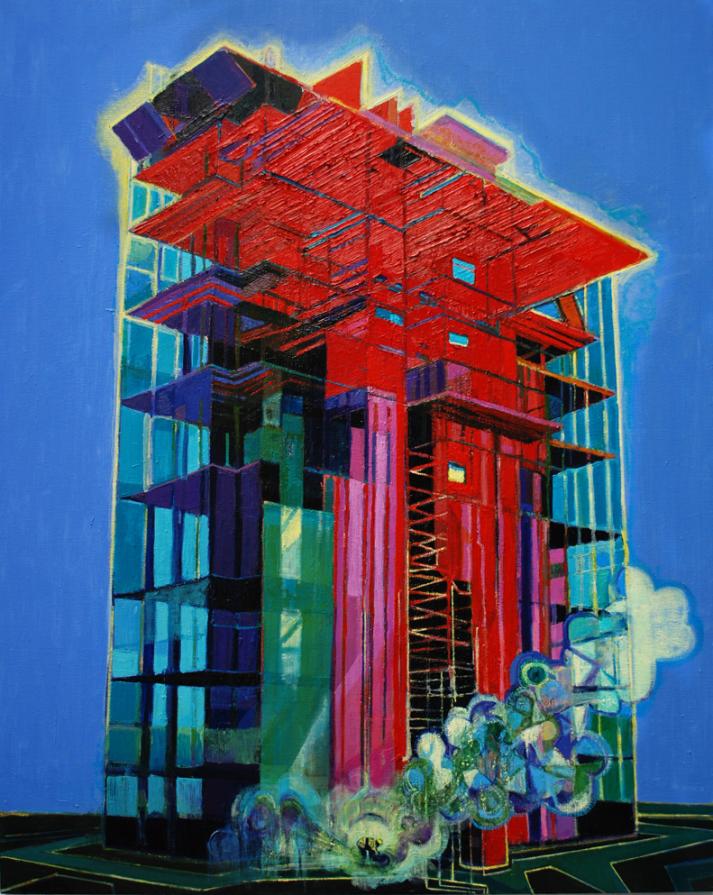Red Model
The construction and ruin of buildings as a metaphor for creation and decay has a long history across all art forms and McWilliams’ powerful canvases continue a pictorial response that stretches back to the Middle Ages. The extrapolation of an alternative reality from observations of actual building s places him in the in the context of artists such as Breughel, Piranesi and Auerbach who have all delighted in the ambiguity of the construction process.
McWilliams’ saturated colour, bold composition and complex surface attract the viewer to an arrested moment in the evolution of a monument. His interest in geometry and pattern and the use of contrast to exaggerate illusion is part of the twentieth century tradition that preoccupied the op artists Escher and Vasarely. The armature appears futuristic, and the materials are contemporary but the construction methods and the human interventions appear timeless, resulting in a fusion of the historic and the futuristic, the synthetic and the organic. The flapping tarpaulins and scaffolding might be skin and bones.
These fictional renditions are redolent of the actual buildings that inspire them but they assume a totemic role, representing the fragility and menace of urban architecture in both form and function. The colours are suggestive of science fiction cinema and dystopian graphic novels or sodium lighting and surveillance. Unlike the optimism and bravura of the workers in Otto Bettman’s collection of iconic photographs of building of the skyscrapers of New York, the figures in McWilliams’ work could be involved in construction or demolition, repair or vandalism. McWilliams’ skilful seduction of the viewer gives way to a questioning unease, implying a more sinister purpose of these buildings and what might happen inside them.








Commenti 0
Inserisci commento